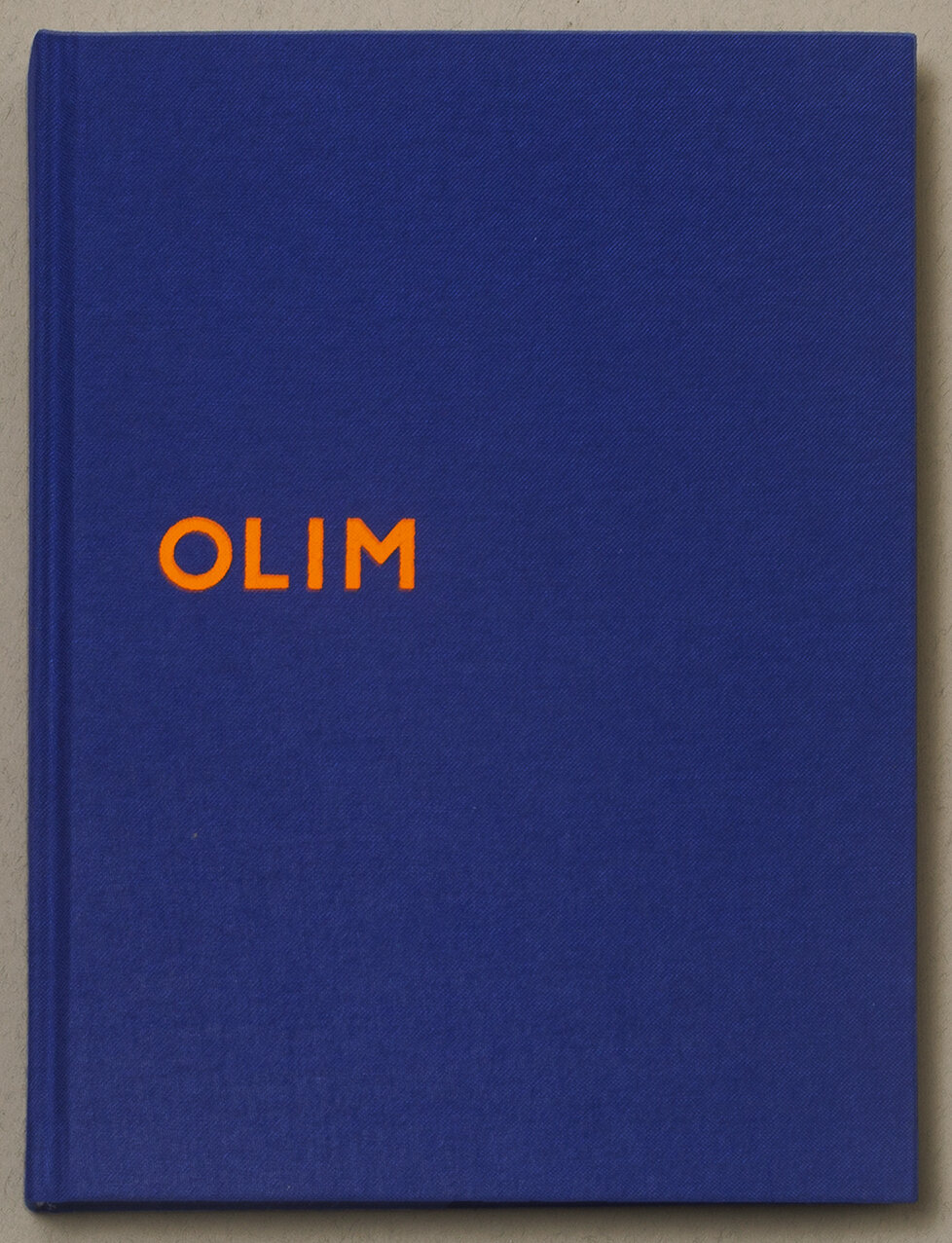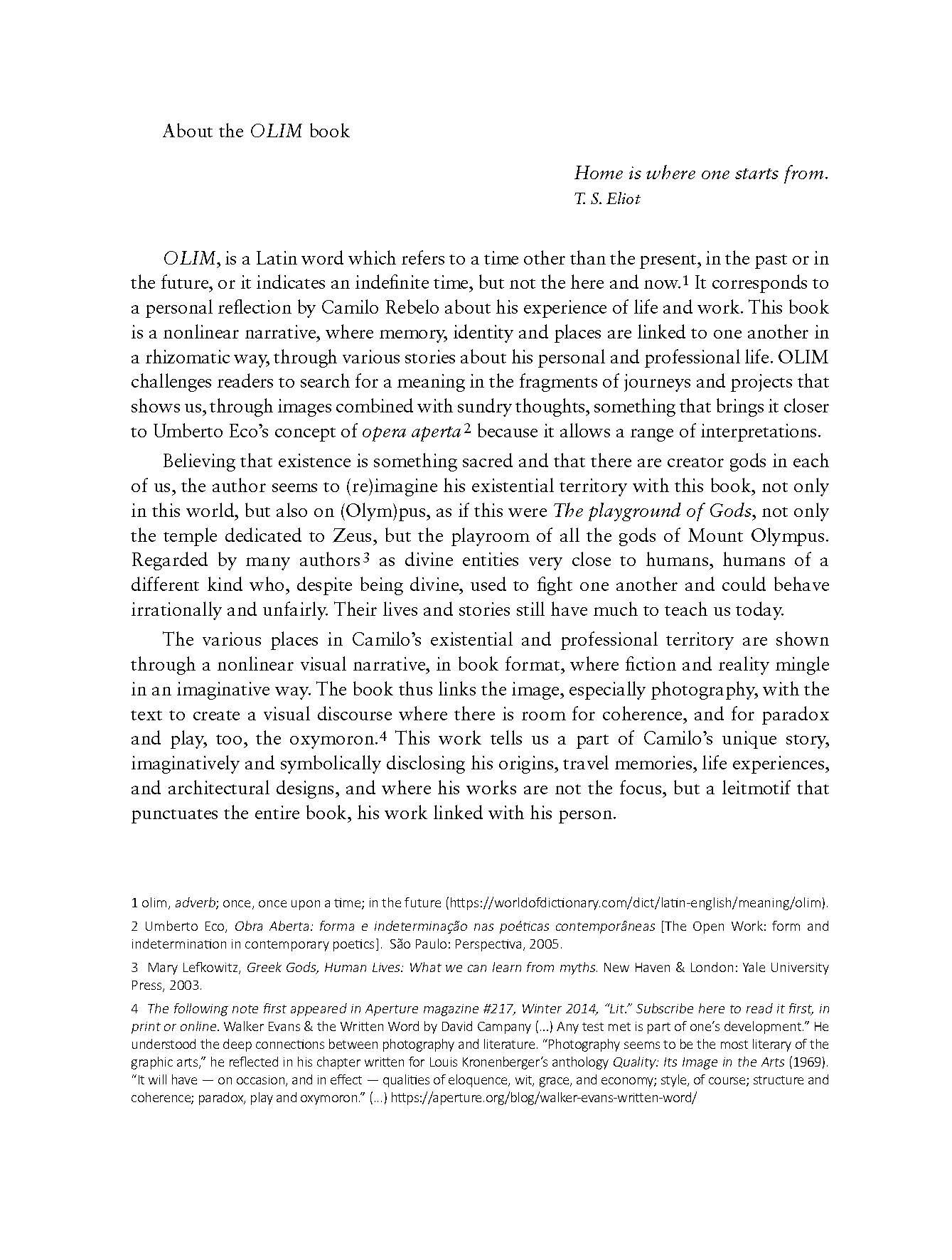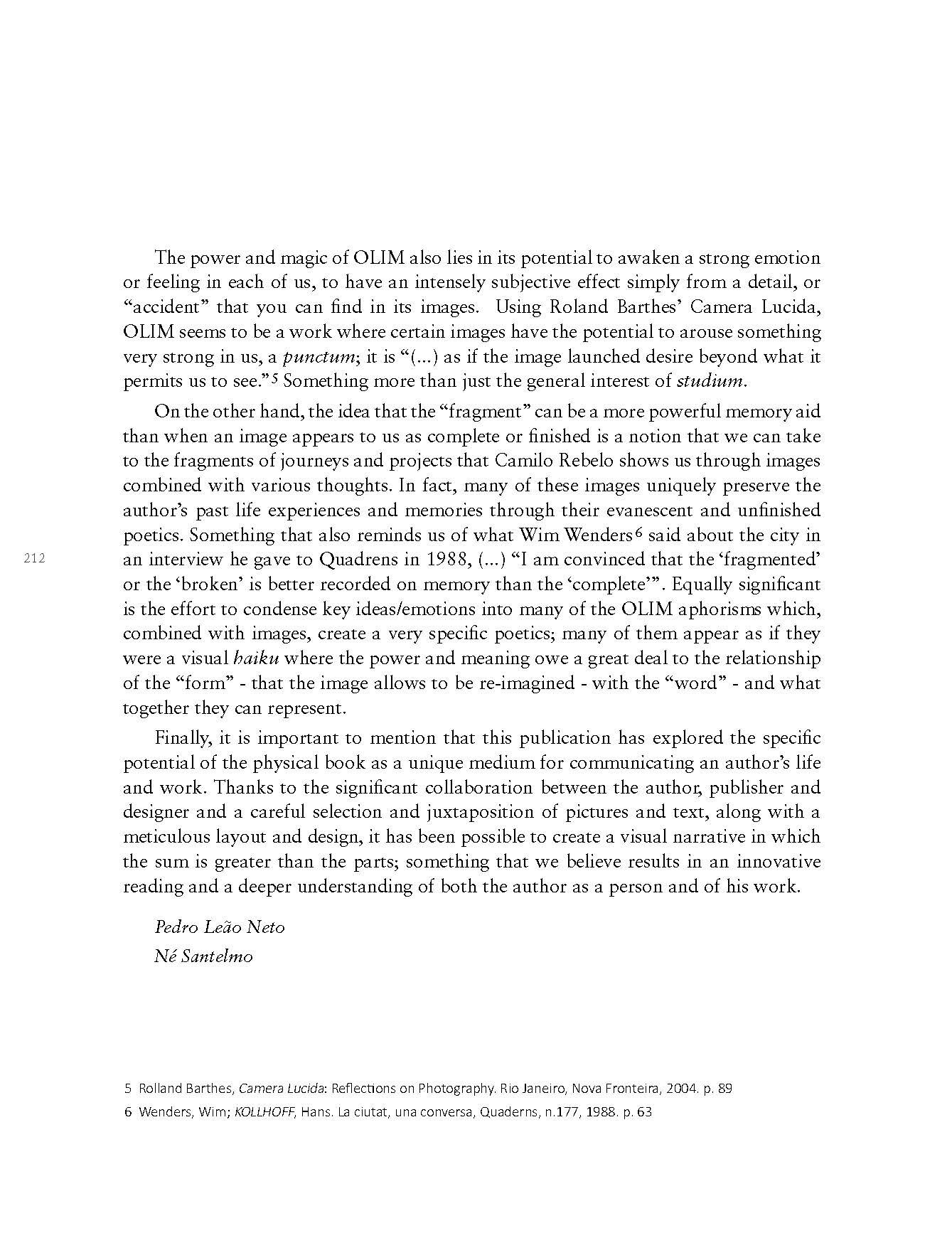OLIM BY CAMILO REBELO
REVIEW BY PEDRO LEÃO NETO & NÉ SANTELMO
OLIM, by Camilo Rebelo
SCOPIO EDITIONS AUTHOR’S BOOK COLLECTION
Porto, 2020
ISBN 978-989-330102
218 pages
ABOUT THE OLIM BOOK BY PEDRO LEÃO NETO & NÉ SANTELMO
Home is where one starts from.
T. S. Eliot
OLIM, is a Latin word which refers to a time other than the present, in the past or in the future, or it indicates an indefinite time, but not the here and now.1 It corresponds to a personal reflection by Camilo Rebelo about his experience of life and work. This book is a nonlinear narrative, where memory, identity and places are linked to one another in a rhizomatic way, through various stories about his personal and professional life. OLIM challenges readers to search for a meaning in the fragments of journeys and projects that shows us, through images combined with sundry thoughts, something that brings it closer to Umberto Eco’s concept of opera aperta2 because it allows a range of interpretations.
Believing that existence is something sacred and that there are creator gods in each of us, the author seems to (re)imagine his existential territory with this book, not only in this world, but also on (Olym)pus, as if this were The playground of Gods, not only the temple dedicated to Zeus, but the playroom of all the gods of Mount Olympus. Regarded by many authors3 as divine entities very close to humans, humans of a different kind who, despite being divine, used to fight one another and could behave irrationally and unfairly. Their lives and stories still have much to teach us today.
The various places in Camilo’s existential and professional territory are shown through a nonlinear visual narrative, in book format, where fiction and reality mingle in an imaginative way. The book thus links the image, especially photography, with the text to create a visual discourse where there is room for coherence, and for paradox and play, too, the oxymoron.4 This work tells us a part of Camilo’s unique story, imaginatively and symbolically disclosing his origins, travel memories, life experiences, and architectural designs, and where his works are not the focus, but a leitmotif that punctuates the entire book, his work linked with his person.
This publication has explored the specific potential of the physical book as a unique medium for communicating an author’s life and work. Thanks to the significant collaboration between the author, publisher and designer and a careful selection and juxtaposition of pictures and text, along with a meticulous layout and design, it has been possible to create a visual narrative in which the sum is greater than the parts; something that we believe results in an innovative reading and a deeper understanding of both the author as a person and of his work.
Pedro Leão Neto
1 olim, adverb; once, once upon a time; in the future (https://worldofdictionary.com/dict/latin-english/meaning/olim).
2 Umberto Eco, Obra Aberta: forma e indetermina o nas po ticas contempor neas [The Open Work: form and
indetermination in contemporary poetics]. S o Paulo: Perspectiva, 2005.
3 Mary Lefkowitz, Greek Gods, Human Lives: What we can learn from myths. New Haven & London: Yale University
Press, 2003.
4 The following note first appeared in Aperture magazine #217, Winter 2014, “Lit.” Subscribe here to read it first, in
print or online. Walker Evans & the Written Word by David Campany (…) Any test met is part of one’s development.” He
understood the deep connections between photography and literature. “Photography seems to be the most literary of the
graphic arts,” he reflected in his chapter written for Louis Kronenberger’s anthology Quality: Its Image in the Arts (1969).
“It will have — on occasion, and in effect — qualities of eloquence, wit, grace, and economy; style, of course; structure and
coherence; paradox, play and oxymoron.” (...) https://aperture.org/blog/walker-evans-written-word/
5 Rolland Barthes, Camera Lucida: Reflections on Photography. Rio Janeiro, Nova Fronteira, 2004. p. 89
6 Wenders, Wim; KOLLHOFF, Hans. La ciutat, una conversa, Quaderns, n.177, 1988. p. 63





